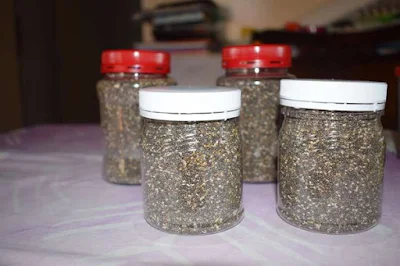The more I
travel and visit farms in different parts of our beautiful country, the more I
fall in love with pawpaw farming in Kenya. I specifically love the small
red-flesh Solo Sunrise variety growing in the hot areas of ukambani and parts
of Embu and Meru. I recently tasted some fruits from Vihiga in Western Kenya
and I was thrilled! The climate and soils there are also perfect for a pawpaw
farming business and the locals are taking up the opportunity.
Now talking about a business of growing pawpaw makes the deal even
sweeter. Despite all the health benefits and the sweetness that these fruits
offer, they are some of the easiest crops to cultivate commercially.
 |
| Mountain pawpaw farming in Kenya |
In February this year (2018), I visited a pawpaw farm in Marigat, Baringo
County. Yes, that’s right; Baringo County. This place is one of the most
hostile parts of Kenya in terms of climate. It was my first time to experience real
heat waves with temperatures rising to about 40°C.
You would expect nothing meaningful to come from such a place. I was surprised
to find a thriving pawpaw plantation right at the heart of this place. The
2-acre Solo Sunrise pawpaw farm had all the trees still fruiting.
“Production has really gone down since we last had rains in October last
year. We are currently getting just about 250kg from each acre in a week.” Said
Robert. I later learned that he was selling a kg of the fruits at Ksh.80 due to
the low supply.
I noted that the trees are not irrigated, and they had not been weeded
for the longest time save for the slashing of the grasses. I wondered how they survived the dry spell and still
produced that much.
Later in March, we were called to Matuu to supply seedlings. It is here
that I found another pawpaw farm right at the middle of an arid area but still
producing well.
Philip, the manager of the farm told us that they were not tending to
the pawpaw trees at all since they were old and the owner of the farm was planning
develop a 2-acre commercial farm.
“So you are not harvesting any fruits from these old trees?” I asked
Philip.
“We are harvesting. Every tree gives us about 2 fruits every two
weeks. We supply a small market comprised of friends of my boss.” He told me.
Since then I have visited several other successful pawpaw farms in Kenya
especially in Meru and Baringo. A few farmers have the crop at a commercial scale but the
much they do is to weed twice a year and water about once a week. Those who do
this can tell you that an acre of solo sunrise pawpaw can yield up to 40 tons in a year.
Pawpaw farming is best done in places with warm or hot climate. In such places,
farmers who have access to irrigation water make a kill since the price of pawpaw in Kenya is never less than Ksh.30 per kg.
Pawpaws grow very fast and in the hot areas, you get your first fruits
in 6 months from planting the seed. This is the case I found in Marigat,
Baringo County and Matiliku in Makueni County.
In these dry places, the pawpaws are also not frequently attacked by pests and
diseases. In fact, several of the farmer I visited were growing pawpaws purely organically, even using animal
manure as the only fertiliser.
The maintenance cost of a pawpaw orchard can be as low as Ksh.10,000 for
an acre in a year since only labour during weeding and application of the
manure is needed. This one acre then produces about 20 tons of fruits in a year
– that is without irrigation. Check out the current market price of a kg of
pawpaw in your local supermarkets or open air market and just find out how much
you are able to make from one acre of pawpaw with this minimum input.
 |
| Pawpaw farming guide for kenya (PDF) |
Now you know what you can do to invest that extra cash you have. Also ensure that you get this papaya farming guide that will guide you right from planting of the seeds through the growth period to harvesting and marketing.
Request for your copy through the Farmer's Resources Page.















